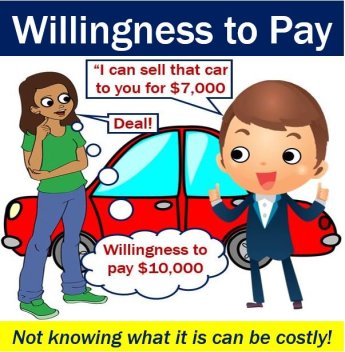The rise of Machine Learning Dynamic Pricing strategies

In today's digital market Machine Learning is starting to influences many sectors of our lives including retail. How? Here are some of the great technological implementations of Machine Learning in eCommerce.
Machine Learning micro-segmentation: Gathering consumer information and behaviours to organize customers by estimated willingness to pay.
Assume we have three doors. We segment our customers by (A) high paying customers behind door 1, (B) medium paying customers behind door 2 and (C) low paying customers behind door 3.

- Price Strategy: First sell only to the high paying customer group A. Then any remaining seats could be sold to medium paying group B. Lastly, any leftovers could be sold to low paying group C. For example: When a new product comes onto the market your price is high and sells to impulse buyers. When the hype dies down you start lowering the price for group B. Lastly any extra stock is sold on sale to group C.
- Strategy: When demand is low start by selling to low paying group C, then as demand grows medium group B and lastly high paying group A. For example airline tickets. People who want a good price shop long before their travel dates like group C, the in-between group B, and last minute travels are the money maker like group A.
Predicting the number of potential buyers and how much each of them is willing to pay weeks in advance is the game changer.
Gathering a vast amount of market Information: knowing more about your competitors than they know about you. Good Data = Good Decisions!

Machine Learning can gather more information and use neural nets to understand patterns and trends better than the average human. In terms of demand prediction finding the asymmetric information using artificial intelligence is your best chance of beating the competition.
Assume you are selling books online, like Amazon back in the day. You know your Bestsellers sell well year round and you can keep a steady price. But what about the books with themes like Christmas, they are outliers. You keep them at a low price year round until the holiday season rolls around creating asymmetrical pricing. Ai can determine the best dates to apply asymmetrical pricing.
AI can learn more about local trends that are happening in real time worldwide far more budget friendly than what could ever be achieved by a group of humans. This enables a company leveraging Machine Learning to gather asymmetric information which enables better demand predictions and strategic pricing decisions.
Estimate your Consumers Budget & Willingness to spend

Almost every website on the internet constantly collects your data, especially by consumer and analytics websites.
- - What are we looking at?
- - How long are we staying on a page?
- - How did we get to this page?
- - What did we add to our Shopping Carts?
- - What did we end up purchasing?
- - What type of demographic do we belong to?
- - and more…
All the data gathered gets added to an Machine learning algorithms that uses your information to predict things about you, one of them being estimating the ‘maximum price’ you are willing to pay.
Predicting the willingness of a customer to purchase from your store can greatly improve your demand prediction and stock you need to have on hand.
In conclusion, every industry sells products or services to a consumer at some price points and determines what max/min is appropriate.
Manufacturers implement the same demand planning strategies to determine how much stock to produce.
Distributors manage pricing and demand forecasts to optimize inventory and distribution.
Marketers use demand estimations and willingness to purchase to make decisions on sales, deals and target audiences.
Advanced algorithms and AI pricing strategies are the fox in the night, quietly transforming how organizations compete.

"The house always wins".
As in gambling, when using dynamic pricing you need to ensure that the house always wins. If your only strategy consist of being cheaper than your competitors you will end up losing out and devaluing the quality of your products. If you are always priced highest to portray prestige, you will lose all the small and medium customers which make sup a large portion of the market. A good balance of price strategies is key. Price your best sellers competitively to attract customers, place related products next to the bestsellers using ai based pricing to boost profits.
Want to give Competitor Price Monitoring a try? [Contact us](https://pricemole.io/contact) to learn more about PriceMole Oracle and our pricing.